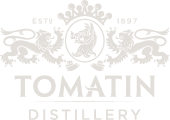Shirakawa Distillery
The Shirakawa Distillery operated for nearly six and a half decades before being demolished in 2003. During this time the distillery produced malt whisky, rumoured to be delightfully exquisite. It seemed Shirakawa Distillery would guard her secrets forever until a discovery of its liquid history was unearthed.




Takara Shuzo Co.,Ltd. is a global organisation based in Kyoto, Japan and has an extensive portfolio of alcoholic beverages, seasonings and bio-tech and is the largest distiller of Korui shochu in Japan.
This truly unique liquid history, Shirakawa 1958, has been produced by Takara Shuzo Co.,Ltd. and distributed globally by Tomatin Distillery Co. Ltd


In 1897 Tomatin was nothing but an isolated and idyllic setting for a distillery. With the new Highland Railway came opportunities, and so the distillery was born.
Since then, the distillery has been at the heart of the community and the community at the heart of the distillery. Today, the Tomatin Legacy lives on in the form of an exciting and varied range of Highland single malt and blended Scotch whiskies.





